Volume 29, Issue 7
Displaying 1-26 of 26 articles from this issue
- |<
- <
- 1
- >
- >|
Journal Symposium (1)
-
2009 Volume 29 Issue 7 Pages 749-757
Published: November 13, 2009
Released on J-STAGE: December 17, 2009
Download PDF (497K) -
2009 Volume 29 Issue 7 Pages 758-763
Published: November 13, 2009
Released on J-STAGE: December 17, 2009
Download PDF (418K) -
2009 Volume 29 Issue 7 Pages 764-770
Published: November 13, 2009
Released on J-STAGE: December 17, 2009
Download PDF (363K) -
2009 Volume 29 Issue 7 Pages 771-779
Published: November 13, 2009
Released on J-STAGE: December 17, 2009
Download PDF (572K) -
2009 Volume 29 Issue 7 Pages 780-787
Published: November 13, 2009
Released on J-STAGE: December 17, 2009
Download PDF (554K)
Journal Symposium (2)
-
2009 Volume 29 Issue 7 Pages 788
Published: November 13, 2009
Released on J-STAGE: December 17, 2009
Download PDF (110K) -
2009 Volume 29 Issue 7 Pages 789-796
Published: November 13, 2009
Released on J-STAGE: December 17, 2009
Download PDF (438K) -
2009 Volume 29 Issue 7 Pages 797-802
Published: November 13, 2009
Released on J-STAGE: December 17, 2009
Download PDF (279K)
Educational Articles
-
2009 Volume 29 Issue 7 Pages 803-808
Published: November 13, 2009
Released on J-STAGE: December 17, 2009
Download PDF (356K)
Review Articles
-
2009 Volume 29 Issue 7 Pages 809-814
Published: November 13, 2009
Released on J-STAGE: December 17, 2009
Download PDF (556K)
Original Articles
-
2009 Volume 29 Issue 7 Pages 815-823
Published: November 13, 2009
Released on J-STAGE: December 17, 2009
Download PDF (750K) -
2009 Volume 29 Issue 7 Pages 824-828
Published: November 13, 2009
Released on J-STAGE: December 17, 2009
Download PDF (345K)
Case Reports
-
2009 Volume 29 Issue 7 Pages 829-834
Published: November 13, 2009
Released on J-STAGE: December 17, 2009
Download PDF (465K) -
2009 Volume 29 Issue 7 Pages 835-840
Published: November 13, 2009
Released on J-STAGE: December 17, 2009
Download PDF (1035K) -
2009 Volume 29 Issue 7 Pages 841-844
Published: November 13, 2009
Released on J-STAGE: December 17, 2009
Download PDF (280K)
Short Communications
-
2009 Volume 29 Issue 7 Pages 845-847
Published: November 13, 2009
Released on J-STAGE: December 17, 2009
Download PDF (275K)
Brief Reports
-
2009 Volume 29 Issue 7 Pages 848-854
Published: November 13, 2009
Released on J-STAGE: December 17, 2009
Download PDF (591K) -
2009 Volume 29 Issue 7 Pages 855-859
Published: November 13, 2009
Released on J-STAGE: December 17, 2009
Download PDF (405K)
[JAMS] Brief Reports
-
2009 Volume 29 Issue 7 Pages 862-866
Published: November 13, 2009
Released on J-STAGE: December 17, 2009
Download PDF (462K)
[JARMA] Journal Symposium
-
2009 Volume 29 Issue 7 Pages 869-879
Published: November 13, 2009
Released on J-STAGE: December 17, 2009
Download PDF (299K) -
2009 Volume 29 Issue 7 Pages 880-889
Published: November 13, 2009
Released on J-STAGE: December 17, 2009
Download PDF (455K) -
2009 Volume 29 Issue 7 Pages 890-896
Published: November 13, 2009
Released on J-STAGE: December 17, 2009
Download PDF (409K) -
2009 Volume 29 Issue 7 Pages 897-900
Published: November 13, 2009
Released on J-STAGE: December 17, 2009
Download PDF (464K) -
2009 Volume 29 Issue 7 Pages 901-904
Published: November 13, 2009
Released on J-STAGE: December 17, 2009
Download PDF (299K) -
2009 Volume 29 Issue 7 Pages 905-910
Published: November 13, 2009
Released on J-STAGE: December 17, 2009
Download PDF (348K) -
2009 Volume 29 Issue 7 Pages 911-914
Published: November 13, 2009
Released on J-STAGE: December 17, 2009
Download PDF (257K)
- |<
- <
- 1
- >
- >|
